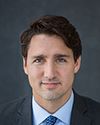All of our coal at the Wabamun Lake area, which would be our Sundance and Keephills plants—2,000 megawatts at Sundance, and then there will be 1,200 megawatts at Keephills—would qualify. There is also a large plant out by Hanna, at Sheerness, that would also qualify.
The project that we know does not qualify is our Centralia plant in Washington, D.C., which is 1,400 megawatts. There the issue is both the geological formations, but more importantly its closeness to Seattle. As you all know, the seismic activity on the west coast is too significant to safely sequester CO2. We're looking at other technologies for that.



